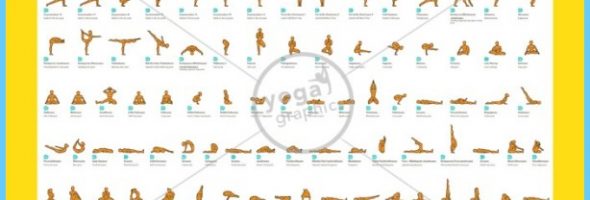

Spine Twisting Pose - Ardha-Matsyendrasana Head to Knee Pose - Janushirasana with Paschimottanasana Standing Separate Leg Head to Knee Pose - Dandayamana-Bibhaktapada-Janushirasana Standing Separate Leg Stretching Pose - Dandayamana-Bibhaktapada-Paschimottanasana Standing Bow Pulling Pose - Dandayamana-Dhanurasana

Standing Head to Knee Pose - Dandayamana-Janushirasana
#Bikram poses in order series#
Standing Deep Breathing Pose - Pranayama Series The order of asanas and pranayama is as follows: The floor sequence includes backbends, forward bends, and twists. The standing sequence includes five balancing poses, which builds focus and concentration. The instructor stands at the front of the room, calling out precise instructions for each pose. The class begins with pranayama, followed by 12 standing poses, 12 floor poses, and a final pranayama. The pranayama and asanas are always practiced in the same exact order. The Bikram Yoga practice sequence is a 90-minute class comprised of two breathing exercises ("pranayama") and 24 poses ("asanas"), each performed twice. Today, the self-proclaimed "guru to the stars" trains and certifies hundreds of new teachers each year from all around the world. In 1974, he founded the Yoga College of India in Beverly Hills, California. The trip was sponsored by the American Medical Association, with the intent for Bikram to demonstrate using yoga to successfully treat those with chronic illnesses. In 1971, he visited the United States for the first time. He remained undefeated for the next three years, and then traveled through India with Ghosh demonstrating weight lifting techniques. Bikram became the youngest contestant ever to win the National India Yoga Competition - at age 11. Born in Calcutta, India in 1946, he studied yoga under the guru Bishnu Ghosh from a very young age. In his youth, Bikram Choudhury was a competitive yoga practitioner in India. An example of compression and extension is during Locust Pose, where practitioners press their body weight onto their forearms during the pose and releases their arms when the pose is finished. It is believed that this flow of fresh blood helps to cleanse the body of infection, bacteria, and toxins that have accumulated over time. When the pose is released, fresh blood is pumped to the area - this is called extension. Each pose stretches or compresses a part of the practitioner's body, which temporarily restricts circulation. Practicing in a heated room increases the practitioner's heart rate, which not only strengthens the heart, but also improves circulation throughout the body.Īnother component of Bikram Yoga that encourages healthy circulation is the practice of compression and extension. Additionally, sweating may help to detoxify and cleanse the body, flushing out waste materials. The warmth and humidity help to loosen the muscles, which allows for greater flexibility and depth in the poses. It is said that the heat in a Bikram class is supposed to mimic the natural heat in the areas of India where Bikram himself learned to practice and teach.


 0 kommentar(er)
0 kommentar(er)
